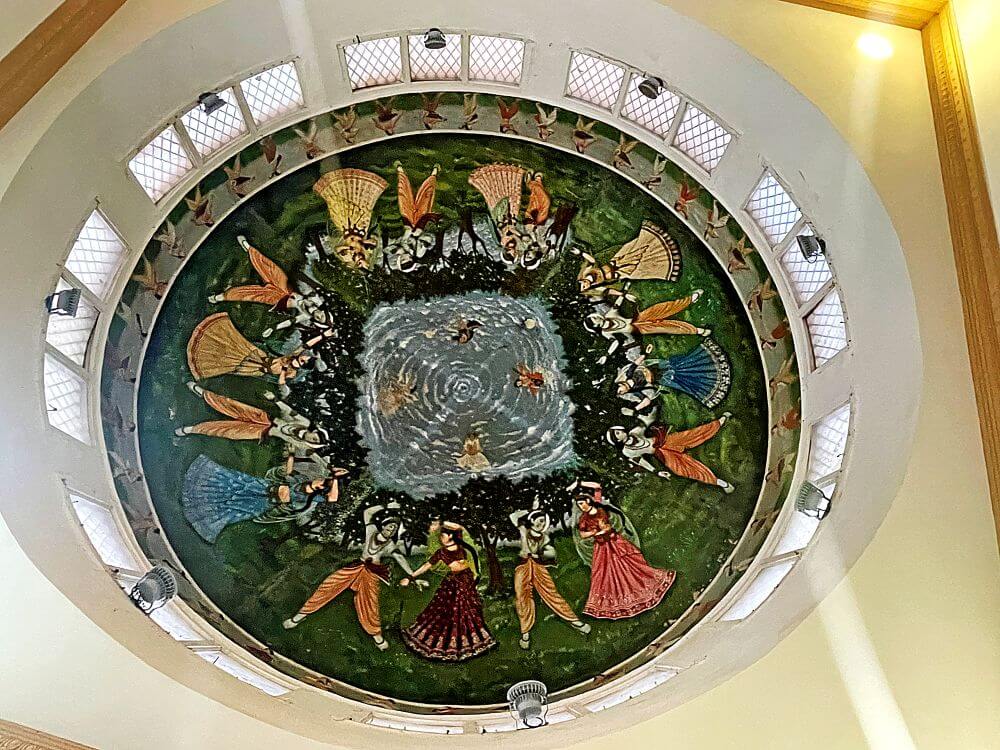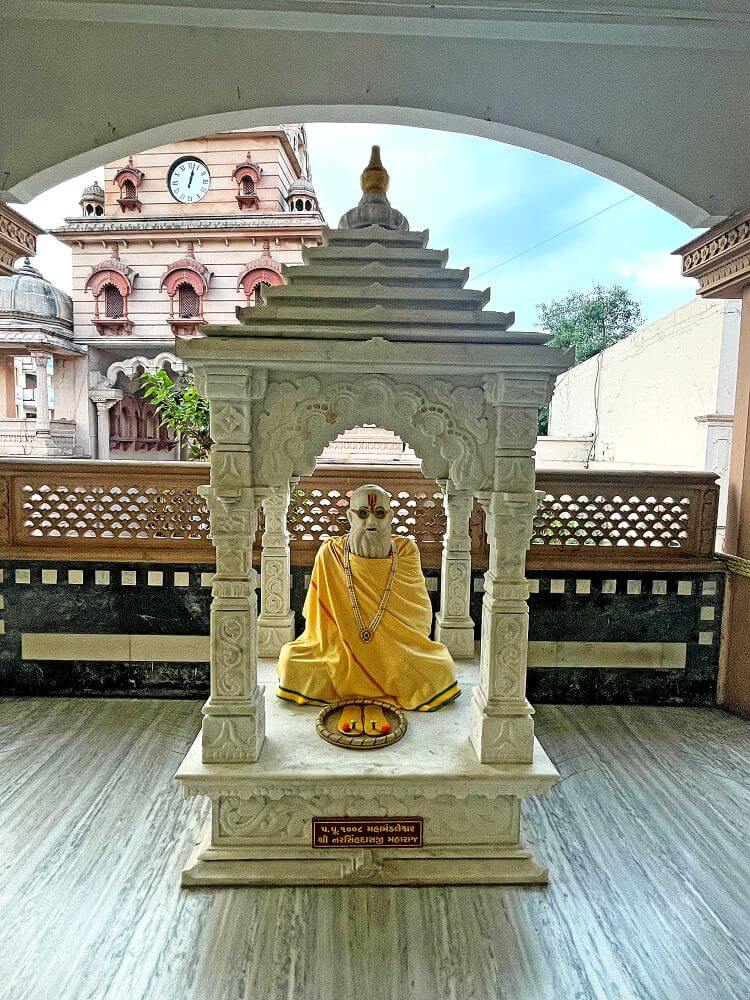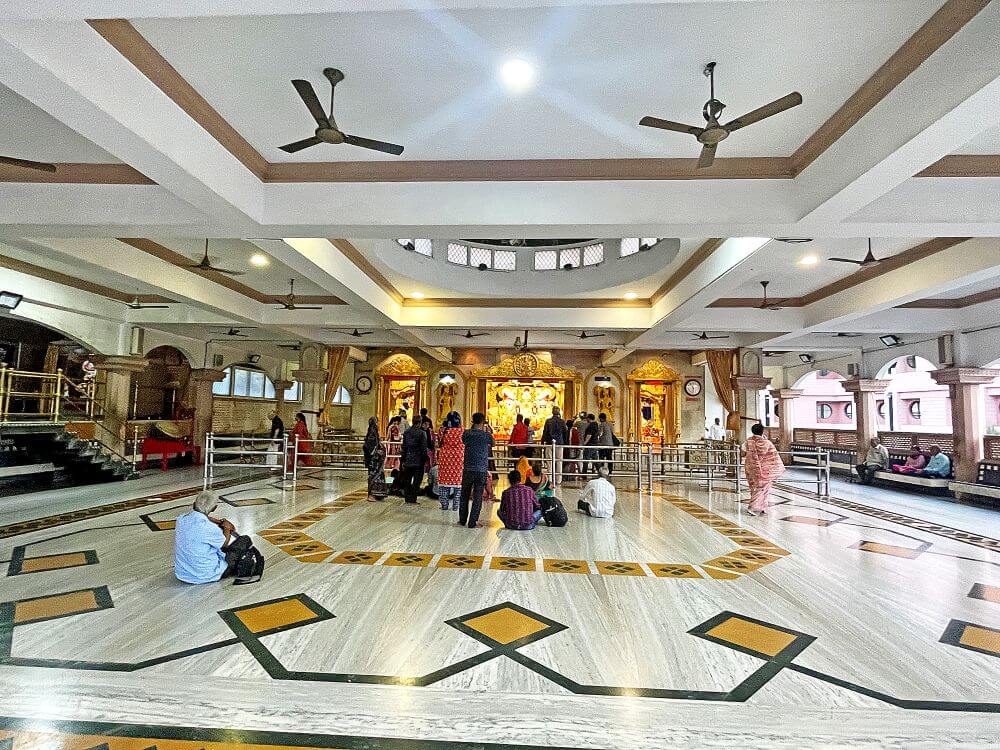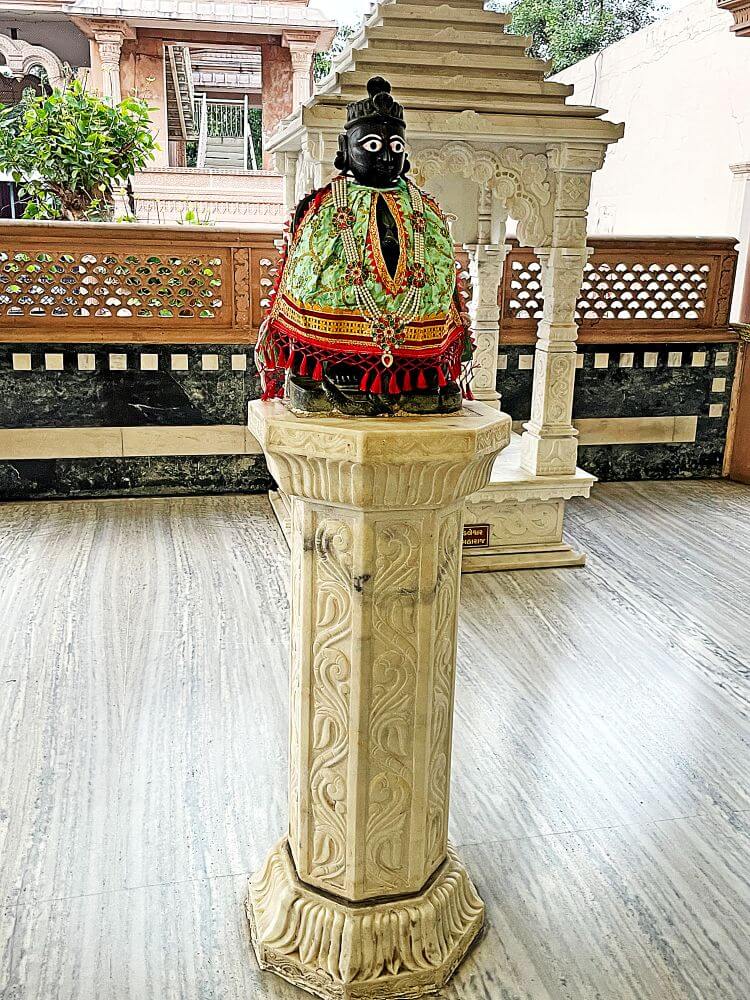 Around 450-500 years ago, what is now the bustling area of Jamalpur in Ahmedabad was once a dense forest, bordered by the Sabarmati River to the east and the Jamalpur Gate to the north. This peaceful riverside location, once a place of penance for sages, is now home to the grand and beautiful Jagannath Temple. The temple is built on the sacred site where Lord Jagannath of Puri is said to have given a vision instructing the construction of the temple. The temple is most famous for its Rath Yatra (chariot procession), considered the second-largest Jagannath Rath Yatra in India after the one in Puri, Odisha.
Around 450-500 years ago, what is now the bustling area of Jamalpur in Ahmedabad was once a dense forest, bordered by the Sabarmati River to the east and the Jamalpur Gate to the north. This peaceful riverside location, once a place of penance for sages, is now home to the grand and beautiful Jagannath Temple. The temple is built on the sacred site where Lord Jagannath of Puri is said to have given a vision instructing the construction of the temple. The temple is most famous for its Rath Yatra (chariot procession), considered the second-largest Jagannath Rath Yatra in India after the one in Puri, Odisha.
The history of this temple begins with Shri Hanumandasji, a  devotee of Lord Hanuman. He came to this serene location on the Sabarmati River during one of his pilgrimages. Impressed by the tranquillity and sacredness of the place, he chose it as his site for penance and built a small temple for his deity. His disciple, Shri Sarangdasji, was also a devotee of Lord Jagannath. Once, while visiting the Jagannath Temple in Puri, he had a dream in which Lord Jagannath instructed him to return to Ahmedabad and establish idols of Jagannath, Balram, and Subhadra there. Following this divine command, Sarangdasji returned and built the temple, converting the original Hanuman temple into what is now the Jagannath Temple. The temple, which is about 200 years old, underwent extensive renovations between 1996 and 2000.
devotee of Lord Hanuman. He came to this serene location on the Sabarmati River during one of his pilgrimages. Impressed by the tranquillity and sacredness of the place, he chose it as his site for penance and built a small temple for his deity. His disciple, Shri Sarangdasji, was also a devotee of Lord Jagannath. Once, while visiting the Jagannath Temple in Puri, he had a dream in which Lord Jagannath instructed him to return to Ahmedabad and establish idols of Jagannath, Balram, and Subhadra there. Following this divine command, Sarangdasji returned and built the temple, converting the original Hanuman temple into what is now the Jagannath Temple. The temple, which is about 200 years old, underwent extensive renovations between 1996 and 2000.
The temple complex is surrounded by fortified walls and has a grand entrance resembling a royal palace gate. The tall entrance features beautiful carvings of Makartoran (decorative arches). Domed canopies flank the entrance on both sides, with two small rooms beneath them where food is distributed to the needy every morning and evening. The entrance’s roof features a two-storied Nagarkhana (drum house), with windows along the walls and a prominent statue of Lord Hanuman in the central niche.
The Jagannath Temple is built on a two-tiered platform, supported by circular pillars. To enter the main assembly hall (Sabha Mandap), visitors must climb 24 steps. The Sabha Mandap is rectangular and spacious, and directly ahead are three sanctums. On the left side, on a raised platform, is a shrine housing a vermilion-coated idol of Hanuman. Nearby, smaller shrines house idols of Radha-Krishna, Ram-Lakshman-Sita, and Mahalakshmi. In the centre of the Sabha Mandap, opposite the main sanctum, stands a black stone statue of Garuda (the vehicle of Lord Vishnu) on a pillar. Behind this, in a small marble shrine, is a statue of Mahamandaleshwar Narsinghdas Maharaj, who was responsible for renovating the temple. His sandals (padukas) are placed in front of the statue in a round tray.
The sanctums of the temple are situated on elevated marble platforms. The outer walls of the sanctums are adorned  with intricately carved golden pillars and decorative canopies. In the central sanctum, the main deities are placed on a lotus-shaped pedestal (Padma Peeth): Balram on the left, Subhadra in the centre, and the dark-complexioned Jagannath on the right. The idols resemble the wooden idols seen at the Jagannath Temple in Puri, leading devotees to feel they are having darshan of Lord Jagannath from Puri itself. These idols are enshrined in golden, intricately carved canopies. In the left sanctum, idols of Dwarkadhish (Ranachhodji), Lord Narsingh, and Tirupati Balaji are placed on a lotus pedestal in a golden canopy. The right sanctum houses a Dattatreya idol. The outer walls of all three sanctums feature tall, golden bas-relief sculptures of temple guards (Pratihari). Above these sanctums are three spires (shikhara) in the Nagara architectural style, featuring straight vertical lines that curve inward near the top below the Amalaka (the stone disc at the summit of the spire), which is called in Sanskrit as Ardhodhwar Shikhara.
with intricately carved golden pillars and decorative canopies. In the central sanctum, the main deities are placed on a lotus-shaped pedestal (Padma Peeth): Balram on the left, Subhadra in the centre, and the dark-complexioned Jagannath on the right. The idols resemble the wooden idols seen at the Jagannath Temple in Puri, leading devotees to feel they are having darshan of Lord Jagannath from Puri itself. These idols are enshrined in golden, intricately carved canopies. In the left sanctum, idols of Dwarkadhish (Ranachhodji), Lord Narsingh, and Tirupati Balaji are placed on a lotus pedestal in a golden canopy. The right sanctum houses a Dattatreya idol. The outer walls of all three sanctums feature tall, golden bas-relief sculptures of temple guards (Pratihari). Above these sanctums are three spires (shikhara) in the Nagara architectural style, featuring straight vertical lines that curve inward near the top below the Amalaka (the stone disc at the summit of the spire), which is called in Sanskrit as Ardhodhwar Shikhara.
In addition to the main temple, there is a shrine dedicated to Vaijnath Mahadev in the temple complex. The silver Shiva Linga is enshrined in a circular depression on a marble floor, with a marble Nandi statue positioned in front. The inner walls of the temple are adorned with images of Ganesh and the goddess, and there is also an idol of a vermilion-coated (Sinduri) Ganapati. Below the temple, there is a large hall  where bhajans (devotional songs) and other religious programmes are conducted.
where bhajans (devotional songs) and other religious programmes are conducted.
The temple’s most famous event is the Rath Yatra, which has become a significant public festival. Mahant Narsinghdas Maharaj initiated this Rath Yatra in 1878. The procession is held annually on Ashadh Shukla Dwitiya (the second day of the bright fortnight in the month of Ashadh). According to religious belief, while devotees visit the temple throughout the year for darshan, on this special day, Lord Jagannath comes out of the temple to give darshan, especially to differently-abled devotees. The Rath Yatra is inaugurated by the Chief Minister of Gujarat. The procession is led by 15-20 decorated elephants, followed by  thousands of devoted participants. The festival features traditional martial arts performances, folk dances such as Ras Garba, bhajan groups, and musicians, making it a spectacular event. The chariot of Lord Jagannath, pulled by devotees, rests at Saraspur, where the local community distributes food to the devotees. The procession returns to the main temple in the evening.
thousands of devoted participants. The festival features traditional martial arts performances, folk dances such as Ras Garba, bhajan groups, and musicians, making it a spectacular event. The chariot of Lord Jagannath, pulled by devotees, rests at Saraspur, where the local community distributes food to the devotees. The procession returns to the main temple in the evening.
In addition to the Rath Yatra, the temple also celebrates a grand Jala Yatra (water procession). On Jyestha Shuddha Purnima (full moon day), a procession is taken to the Sabarmati River, where the ritual worship of the Ganga is performed. Water from the river is brought in multiple vessels for the ceremonial bath (Abhishek) of Lord Jagannath, conducted with Vedic chants and rituals. It is believed that after this ceremony, Lord Jagannath symbolically visits his maternal uncle’s house.
Other significant festivals celebrated at the temple include Guru Purnima (Ashadh Shukla Purnima), Vasant Panchami (Magh Shuddha Panchami), Holi, Diwali, and Ram Navami. Thousands of devotees participate in the grand Janmashtami celebration (the birth of Lord Krishna) on Shravan Krishna Ashtami. From Shravan Shuddha Tritiya to Purnima, the temple celebrates the Hindola Utsav (Swing Festival) with great enthusiasm. According to legend, this festival is held to appease Rukmini, Lord Krishna’s consort, who was upset when Krishna took Subhadra on the Rath Yatra. Daily rituals at the temple include Mangala Arti at 6 a.m., Rajbhog Arti at 11:30 a.m., Sandhya Arti at 5:30 p.m., and Shayan Arti at 8 p.m. Devotees can have darshan from 6 a.m. to 1 p.m. and from 3 p.m. to 9 p.m.
The temple runs a large cowshed (Goshala) where buttermilk (Chans) is distributed free as Prasad to devotees. Additionally, the temple manages a free food distribution centre (Annakshetra), a Panchakarma hospital, and a guesthouse, along with various social welfare activities.
